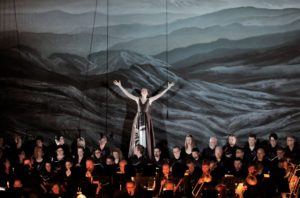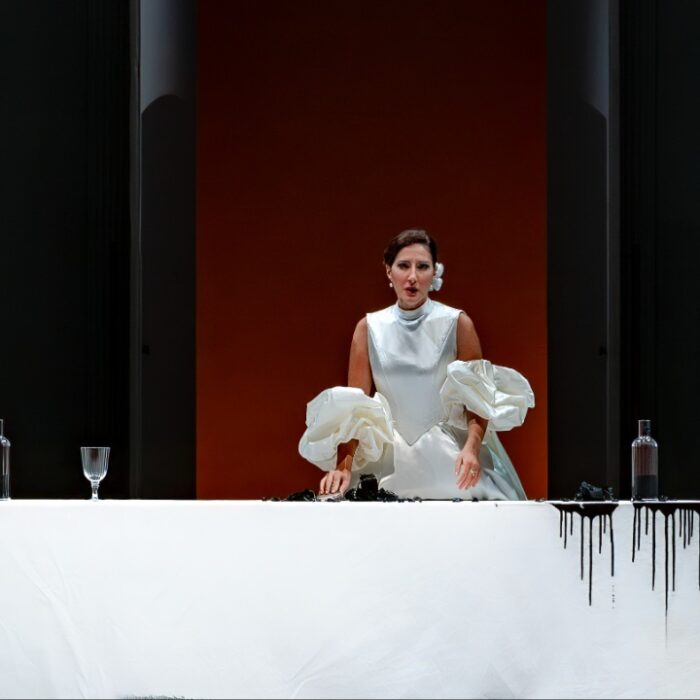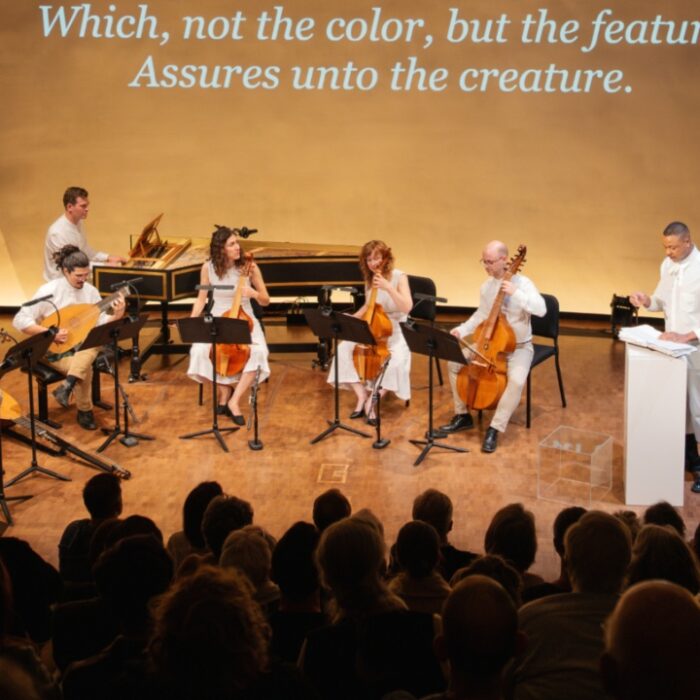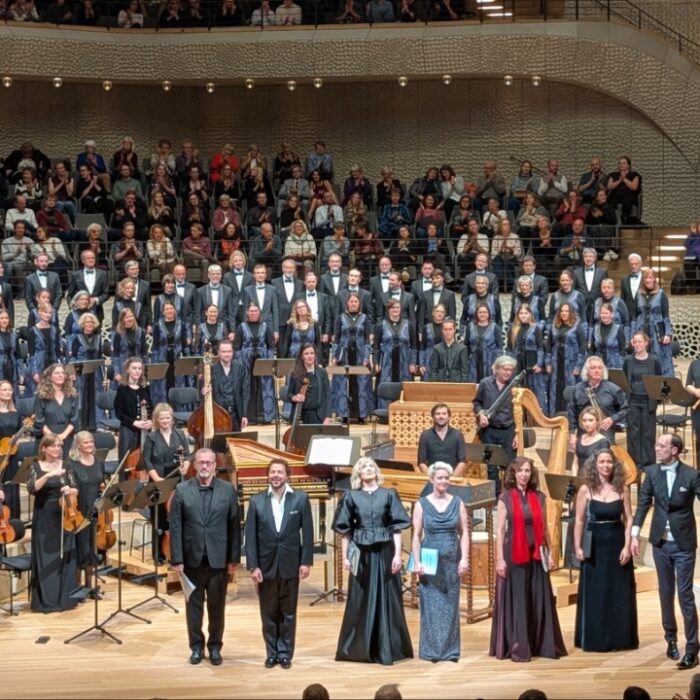
Bard Summerscape 2017 Review – Halka: Amanda Majeski Triumphs In This Rarely Heard Polish Opera
By Francisco Salazar“Halka” is considered one of the first great Polish operas in the canon. While it is rarely performed outside of Poland, Stanisław Moniuszko’s work has had a couple of outings in the United States.
This season, the Bard Music Festival presented it in collaboration with the Polish National Opera in a semi-staged version that while not completely satisfying in its execution showcased some fine young talent and a scene-stealing soprano who made a compelling case for full production of the work.
The Opera
For the uninitiated, the opera tells the story of Halka, a peasant girl who is betrayed by her lover Janusz after she is promised he will escape with her. Throughout the opera, Halka maintains hope that Janusz will keep his promise until she realizes his is marrying Zofia, the daughter of a wealthy landowner. Upon her discovery, Halka attempts revenge by burning the church down but instead pardons Janusz and jumps into a river drowning herself.
Moniuszko’s music is very traditional, evoking some of the Bel Canto style, particularly in Halka’s duet with Jontek in that there is a slow and fast section. The overture also takes on the AB style starting it with a slower melody that leads into an Allegro and then a B section. Additionally, there is very traditional Polish music such as the mazurka that begins the third act, among other dances. And then there are some melodic moments that evoke folk music in Halka’s second act aria.
But the real gem in this entire opera is the final scene with Halka showcasing a range of emotions through the vocal and orchestral writing. The scene begins with soaring lyrical lines that evolve into dramatic outpourings that end with a gorgeous prayer-like figure that is accompanied by the celestial sounds of the harp.
The Semi-Production
Before I get to the singers, the semi-staged production has to be mentioned. Directed by Mary Birnbaum, the staging used painting backdrops to evoke the mountains and four macrame lamps covered with neon paper flowers and tassels at the top of the theater. And there was also a small church model used for the fourth act.
There were a number of dances choreographed immaculately by Adam Cates, albeit with restrictions. The two highlights of his work came in the Mazurka that kicks off Act three with two male and two female dancers, dressed in traditional garb, performing in tandem and moving with ease across the small and restricted space. During Halka’s vision of a black raven, there was a dancer dressed in black that represented the bird. Gliding through stage left, it almost seemed as if he was shapeshifting into a bird. Together with the chiaroscuro lighting, the dancer’s movements, the text, and the vocal line, this sequence was a masterful display of total theater, even if it was only partially staged.
However, I want to add one thing. What Cates and his dancers did on this stage is somewhat of a miracle as they danced in front of an orchestra, using whatever miniscule space was afforded them. While it was outstanding to see the incredible job these professionals did, one would have hoped for a complete stage production to truly show the total work of these dancers and their choreographer.
As for the production itself, Birnbaum also did impressive work particularly with the lighting effects, emphasizing a very chiaroscuro feeling and creating the tragic tone from the onset. She also made sure to use the complete theater allowing the singers and dancers to enter from the audience seats or from stage doors.
The problem, however, came at the fact that many times it seemed that many of the performers looked restricted to their music stands and could not completely act their parts the way they hoped. And that was evident particularly at the end in the final sequence when Halka jumps into the river. The moment, while dramatic, wasn’t all that convincing. Still, this semi-staged version showed the versatility of Birnbaum and one only hopes that she could direct a fully staged version of the work.
A Triumph
But even if the staging was not all that satisfying, the musical performances of the cast were impressive, particularly Amanda Majeski, who triumphed in the title role.
From the moment Majeski began singing it was clear she had an understanding of her character. Her opening lines off stage were sung with a melancholic tone showcasing a young girl longing for her lost love. And when she stepped on stage, she sang with beautifully connected lines each time growing with more clarity and gorgeous tone but still managing to bring out that unhappiness. This sense of loss was compounded by her initial reaction to Janusz, her timbre suddenly finding vigor and brightness. In the ensuing duet, this was strengthened, the thrill in her voice growing throughout the duet.
In Act two Majeski brought out the gorgeous color in her timbre before letting out her immense volume in the emotional duet with Jontek, portrayed by Miles Mykkanen. Here one started to witness the dramatic force of the soprano and the range of emotions. Her gestures became less controlled and her voice issued a sense of torment. Together with Mykkanen, their voices unified to create drama and vocal beauty.
In the third act, Majeski showcased her ringing sound as her voice soared over the orchestra and chorus in the moving concertato where she discovers that Janusz is getting married. The voice growing in power with each phrase until it climaxed with a high note and the dramatic qualities blossomed.
And in Act four Majeski showed why she is such a promising artist. The scene began with a recitative-like structure with Majeski singing with a powerful instrument. The rhythms highlighted the feeling of a tormented women. Her movements grew more unpredictable and the instability was expressed through her facial expression and hand gestures. But then as she delved into the aria, Majeski’s flowing line expressed sadness and a return to the nostalgic tone from the beginning. The line grew in volume, eventually shifting into a recitative that allowed Majeski to engage in potent vocal outbursts and a fragmented line. It was not until the church organ was heard, that Majeski’s legato resumed, a piano line of forgiveness accompanied by the luscious cello solo and harp. She emanated a celestial quality in the final portion that capped her performance a truly mesmerizing note.
The Cast
As Jontek, Mykkanen showed a sturdy and ardent sound. While his opening lines caused some worry due a crack in his higher register, Mykkanen’s technique was too good and he overcame any missteps. His voice carried throughout the hall and physically he was the most active running through the stage with a stand or walking away from his music to interact with the rest of the cast. But where he impressed the most was during his act four aria. While he sang with a passionate and ardent timbre throughout the evening, this aria allowed the tenor to display the subtle pianos in his voice as well as the tender qualities the instrument can produce.
As Janusz, Aubrey Allicock showcased a sturdy baritone that carried well, even if it sometimes got covered by the bombastic orchestra. Meanwhile, Teresa Buchholz portrayed Zofia with nuance and full mezzo voice.
Rounding out the cast, Liam Moran sang Stolnik and Tom McNichols sang Dziemba. Both made formidable use of their short but crucial roles, showing large bass-baritone instruments.
The Orchestra
Leon Botstein conducted a bombastic account of the score albeit with some soaring moments. It is important to note that from the very beginning the orchestra covered the chorus at many moments, sometimes making it inaudible. And then at other moments, the singers seemed to stretch their vocal forces in order to be heard. But to say that the loud playing at times wasn’t powerful would be incredibly unfair. Sometimes music needs to get that treatment and Botstein really relished in this, particularly in the Act three concertato when he let the full force of the orchestra take center stage. Together with the chorus and the soloists, it was hard not to get chills.
And to say that Botstein was not subtle and lush in other moments would also be a lie. In the final scene, the principal cellist played with a lush tone using glissandi to literally sing with his instrument as he accompanied Majeski throughout. Meanwhile, the harp came through elegantly with a heavenly tone as it played through arpeggios.
Overall, this was an evening that showcased a work that deserves a second chance and it also brought to the fore a star soprano who is clearly on the road to stardom.


